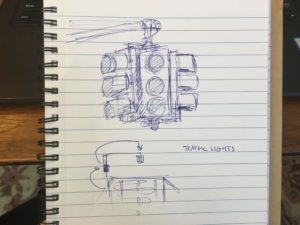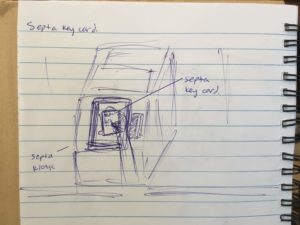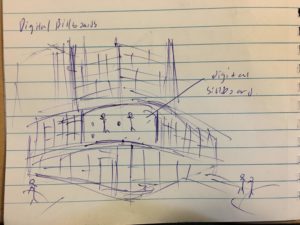Traffic Light

This is a traffic light that I saw on my street corner, which controls the flow of traffic on the road. However, I think there’s some network infrastructure involved in traffic lights that we don’t think of often. I remember hearing about how some lights can detect whether there are cars on the road, which influences what light they show. I dug into this a little, and found that these are called inductive loop traffic lights. Basically, there are coils of inductive material underneath sections of road that increase in inductivity when a car’s heavy metal body bears down on it. This increase sends a signal to a device, which tells the light to behave in a certain way. The sending of the signal requires some sort of communication between different devices and may involve a client-server connection, but I’m not completely sure on this. I think it was implemented to make traffic lights more efficient, so the flow of traffic isn’t impeded in any way that can be prevented.
SEPTA key card

This is a sketch of a SEPTA key card making contact with a machine on Philadelphia’s SEPTA lines. Septa is the main form of cheap, public transportation in Philadelphia, and people used to use tokens to pay their fare. Only recently, did the company start using the key card system, which is their way of modernizing the line. I think it’s related to networks because there’s a clear communication between the key card and the machine that reads the card, telling you that it has been read and accepted. You can also check your balance online, which means the card is probably sending information to a server that’s updating the page with your data. Mainly, I think they replaced the token system with the card one because it makes it easier for all the users, so they don’t have to buy tokens or carry around cards and can just go to a kiosk to refill them or get a new one.
Digital Billboard

A sketch of a digital billboard that I found in the city, which displays information in the form of text, pictures, and videos to people passing by. I thought about how this was different from classic physical billboards and realized that there must be some level of communication between this device and another for information to be transmitted to the board. My guess is that someone uses a computer to send information and media to the board to display, maybe by making a client-server connection or using network-related devices. I think this is probably the easiest and most efficient way of transmitting media to billboards, other than physically connecting a computer and uploading the media that way. It’s definitely more dynamic and eye-catching than normal billboards, and probably easier to implement in certain aspects, too.
